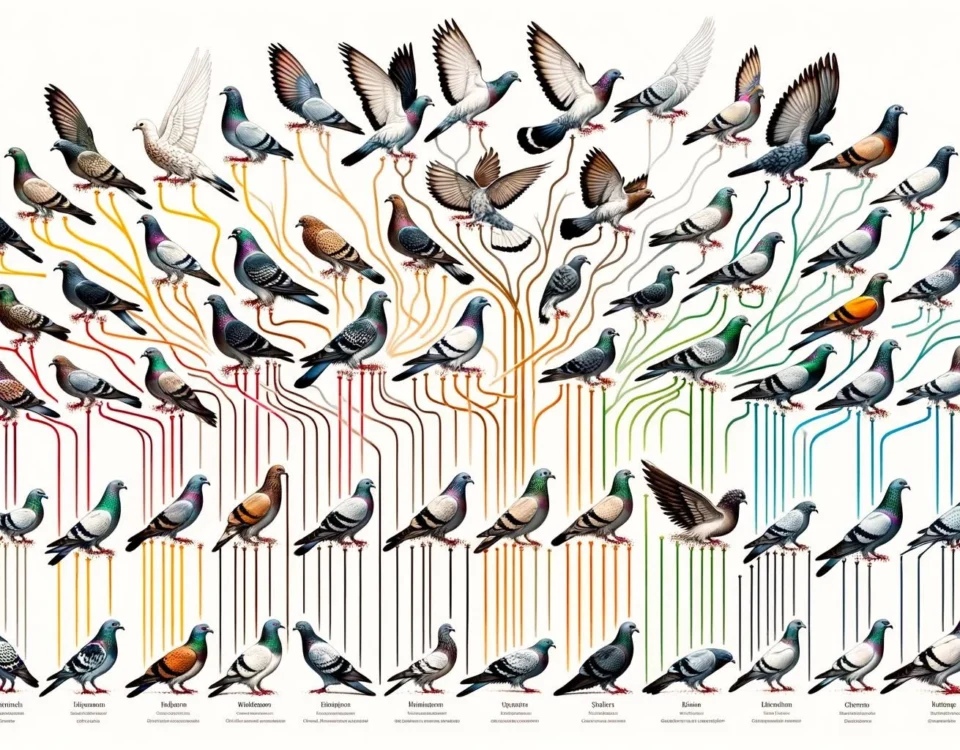Wild pigeons, also known as Band-Tailed Pigeons, are the only species of pigeons that migrate. They are known for their winter migrations, moving from their breeding grounds along the northern Pacific coast to California or even further south. Pigeons located in the southwest migrate to the south of the Mexican border, towards Belize and Guatemala. While most bird species migrate, pigeons choose to stay put, with the exception of the Band-Tailed Pigeon.
Reasons for Lack of Migration in Pigeons
Unlike other bird species, pigeons do not possess the instinctive urge to migrate. There are several reasons for this behavior:
- Pigeons do not have a set season for breeding and can mate and breed in both spring and autumn. This means that if they were to migrate, they would have to make two treks within a year, which would be exhausting for them.
- Pigeons face a variety of predators, both in the air and on the ground. Migrating birds face different kinds of predators along their flight and at their destination. Pigeons may have evolved to deal with the predators they know rather than taking a risk with unfamiliar predators.
- Pigeons have thick plumage that acts as insulation against cold conditions. They also roost together to share body warmth, providing protection against both predators and harsh weather.
- Pigeons are able to find enough food to sustain themselves in their natural environments, even during breeding seasons when they have to provide for their young. Their ability to find food and produce crop-milk for their chicks means there is no need for them to migrate.
- Pigeons have adapted to urban environments where food and shelter are easily accessible. This means that they do not need to travel long distances to find resources, unlike other birds that migrate in search of food and nesting sites.
- Pigeons are built for short bursts of flight rather than long flights that last for extended periods. Their bodies are not well-suited for the stamina required for long migrations, making it difficult for them to engage in extensive flights.
- Pigeons are social birds that live in large groups, and their social structure may make it challenging for them to form migrating groups. Their tendency to stay in one place with their flock can hinder the formation of large migrating groups.
- Pigeons are able to survive the winter without migrating due to several adaptations. They can store a large amount of fat in their bodies, which acts as fuel to keep them warm and mobile when food is scarce. Pigeons can seek shelter in urban areas by roosting on buildings and other structures to escape the harsh elements. They can also adapt their behavior to changing environments, making them a common sight in cities worldwide.
Potential Impact of Human Activities
Pigeons living in cities have adapted to human presence by relying on human-provided food for survival. Their ability to thrive in urban environments and survive the winter without the need to migrate is a testament to their adaptation to human activities. However, human activities such as hunting, habitat destruction, and climate change can impact pigeon migration patterns.
Hunting and habitat destruction have led to the extinction of some migratory pigeon species, such as the passenger pigeon. Changes to the environment caused by people, like building structures, can also affect where pigeons live and how they migrate. Climate change, mainly caused by humans, can alter the timing and location of food sources, influencing the migration patterns of pigeon species.
Pigeons movement is influenced by various factors, including food availability, water sources, climate, breeding space, and social interactions. These factors, along with human activities, play a significant role in shaping pigeon migration patterns and behaviors.
Conclusion
While most bird species migrate, pigeons, with the exception of the Band-Tailed Pigeon, choose to stay put. Their adaptation to urban environments, physical limitations, and social behavior make them sedentary birds that do not migrate. Factors such as breeding location, food availability, and weather influence pigeon migration patterns, with different species displaying migratory or non-migratory behaviors. Human activities can impact pigeon migration patterns, highlighting the need for conservation efforts to protect all avian species, including pigeons.
Key Takeaways
- Wild pigeons, known as Band-Tailed Pigeons, are the only species of pigeons that migrate.
- Unlike other bird species, pigeons choose to stay put and do not possess the instinctive urge to migrate.
- Several factors contribute to the lack of migration in pigeons, including their breeding cycle, adaptation to urban environments, physical limitations, and social behavior.
- Pigeons are able to survive the winter without migrating due to various adaptations such as fat storage, seeking shelter in urban areas, and behavioral flexibility.
- Human activities can impact pigeon migration patterns, and efforts to mitigate this impact are crucial for the protection of all avian species.









